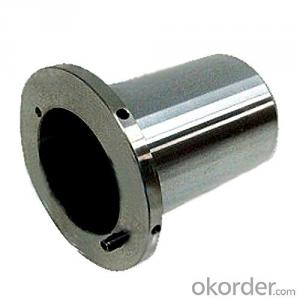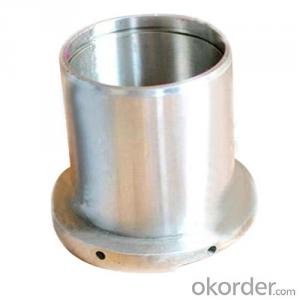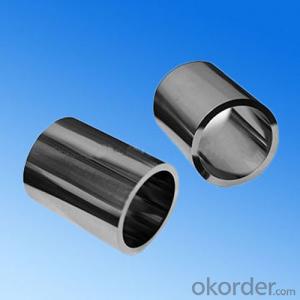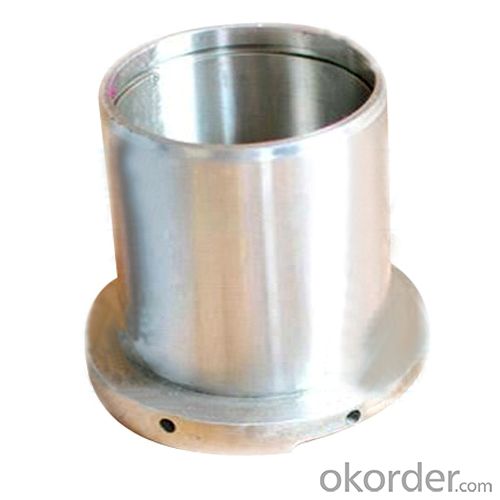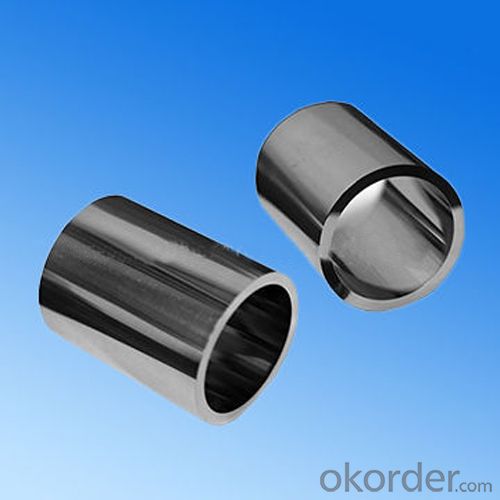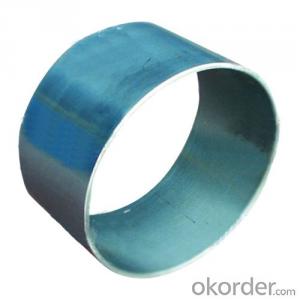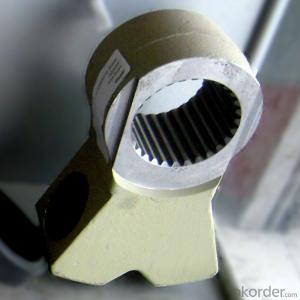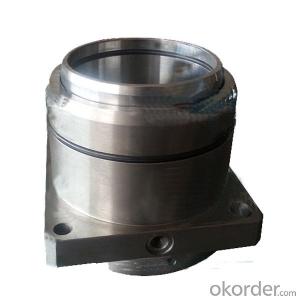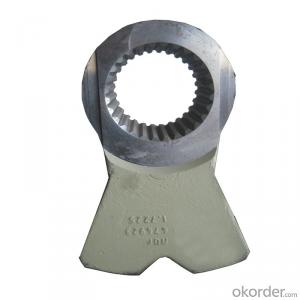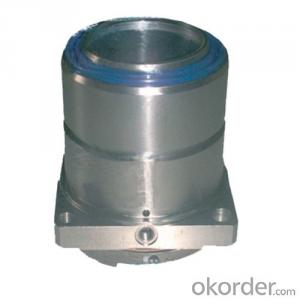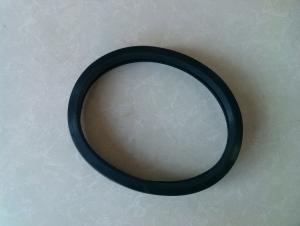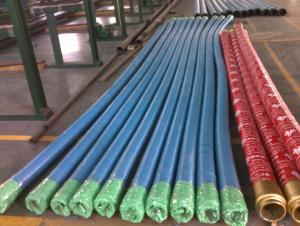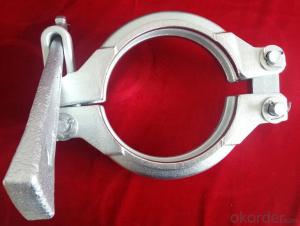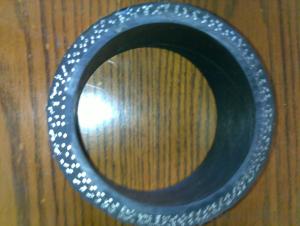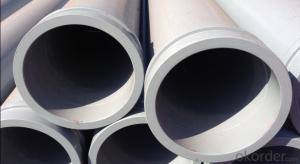Wear Sleeve Q90 Concrete Pump Parts High Quality
- Loading Port:
- Shanghai
- Payment Terms:
- TT OR LC
- Min Order Qty:
- 1 pc
- Supply Capability:
- 1000 pc/month
OKorder Service Pledge
OKorder Financial Service
You Might Also Like
Product information:
Wear Sleeve is the basic material among the frictional materials
They are widely used as the basic components for sealing
And the Wear Sleeve are widely adopted in petrochemical
industry due to its excellent performances such as wear ability, anti corrosion
Wear Sleeve is widely known for its durability and quality
It can withstand high pressure and is resistant to corrosion, so is used in water pumps, oil pumps and various other pumps
Today, Wear Sleeve has been playing an important role in the field of long working parts material
Salient features:
Special carbide grade developed for this application
Good cutting edge retention
Good functional lifespan
Applications:
Wear Sleeve is often used in concrete pumps.
Advantages of our products:
Made from 100% virgin raw material
Produced with advanced equipment
All products go through in-process and final inspection
Free technical service online
FAQ:
Q1: How long about delivery time?
A1: Normally we keep the raw materials for old customers and sometime we also keep stock products to make sure delivery time in any emergency cases.
Q2: How do we guarantee the quality of our pipes?
A2: We have established an advanced quality management system which conducts strict quality tests at every step, from raw materials to the final product. At the same time, we provide extensive follow-up service assurances as required.
Q3: How soon can we receive the product after purchase?
A3: Within three days of placing an order, we will book the vessel for goods. The specific shipping date is dependent upon international and government factors, but is typically 7 to 30 workdays.
Q4: If we can produce some pipes according to customers request?
A4: Yes, we can produce Concrete Placing Boom according to the difference country situations to make it suitable to the market and customers. We have very professional technical team to make the design.
Q5: How to make a quick resolution for after service?
A5: OKorder and our manufacture both have overseas branches all-around of world, If needed,
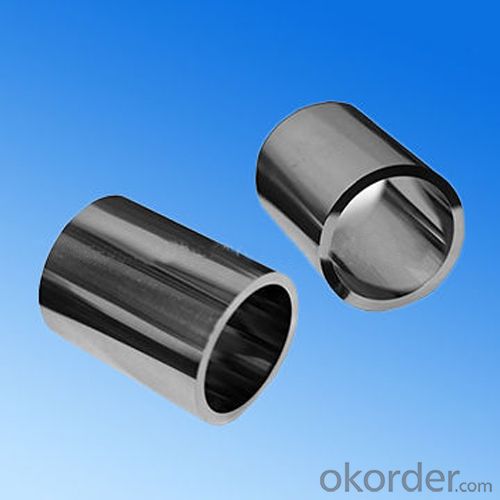
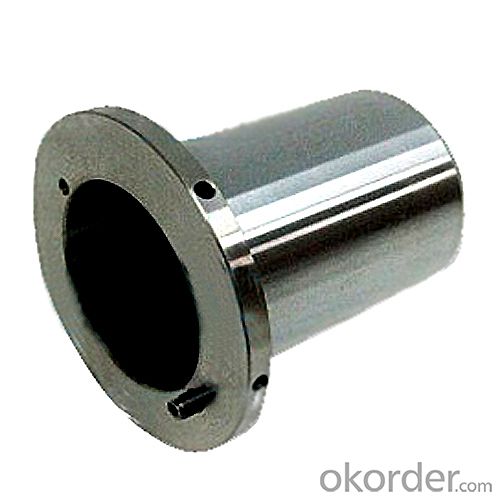
- Q: What are the layout requirements of concrete pump for building engineering?
- Concrete pump or pump truck layout, parking site should have enough space, in order to ensure concrete mixing truck feeding, shunting convenience
- Q: How does a hopper agitator motor ensure consistent concrete mixing?
- A hopper agitator motor ensures consistent concrete mixing by providing a continuous and powerful agitation motion within the hopper. This motion helps to break up any clumps or aggregates in the concrete mix, ensuring that all components are evenly distributed. The consistent agitation also helps to prevent settling or segregation of the mixture, resulting in a uniform and well-mixed concrete batch.
- Q: How can a faulty boom affect the concrete placement process?
- The concrete placement process can be significantly affected by a faulty boom. Firstly, the safety of the workers involved may be compromised. When the boom is not functioning properly, it may not be able to handle the weight and pressure exerted by the concrete, which can lead to potential collapse or failure. This endangers the lives of the workers at the site. Secondly, inaccurate and uneven concrete placement can result from a faulty boom. Malfunctioning parts of the boom can cause the concrete to be discharged at incorrect angles or distances, leading to uneven distribution and an inconsistent concrete surface. This, in turn, can impact the structural integrity and aesthetics of the final product. Furthermore, delays and disruptions in the concrete placement process can occur due to a faulty boom. If the boom breaks down or malfunctions during operation, it will require repairs or replacement, causing downtime and potentially halting the construction work. Consequently, project delays, increased costs, and overall inefficiency can arise. Lastly, wastage of concrete can result from a faulty boom. When the boom is not functioning properly, it may fail to control the flow and discharge of the concrete accurately. This can lead to spills, overflows, or excessive pouring, resulting in unnecessary wastage of concrete material. Not only does this increase project costs, but it also has environmental implications. In conclusion, a faulty boom can have severe consequences on the safety, accuracy, efficiency, and cost-effectiveness of the concrete placement process. Regular inspections, proper maintenance, and prompt repairs are crucial to mitigate any potential risks and ensure smooth concrete placement operations.
- Q: How do concrete pump spare parts help in the pumping process?
- The smooth and efficient operation of a concrete pump relies heavily on spare parts. These parts are crucial for enhancing performance, extending the pump's lifespan, and ultimately saving costs. The use of concrete pump spare parts offers several advantages, one of which is improved pumping efficiency. These parts are meticulously manufactured to ensure the optimal flow of concrete through the pump. For example, the wear plate, wear ring, and S valve all play a crucial role in reducing friction and enhancing pumping performance. By minimizing friction and maintaining a consistent flow, these spare parts prevent blockages and allow for the smooth and efficient pumping of concrete. In addition, concrete pump spare parts are vital for minimizing downtime and reducing maintenance costs. Since the pump operates continuously, wear and tear are inevitable. However, replacing worn-out parts with high-quality spare parts on a regular basis can significantly prolong the pump's lifespan and decrease the need for frequent repairs. Investing in durable and reliable spare parts helps operators avoid unexpected breakdowns and costly repairs, ensuring uninterrupted and efficient pumping operations. Furthermore, concrete pump spare parts contribute to the safety of the pumping process. Components such as the safety valve, hopper grate, and control system all play critical roles in preventing accidents and ensuring the well-being of operators. These spare parts are designed to facilitate the safe and controlled pumping of concrete, reducing the risk of equipment failure and potential hazards. In conclusion, concrete pump spare parts are indispensable in the pumping process as they improve efficiency, minimize downtime and maintenance costs, and enhance safety. By investing in high-quality spare parts, operators can optimize the pump's performance, increase productivity, and achieve long-term cost savings.
- Q: How long do concrete pump pipes typically last?
- The lifespan of concrete pump pipes generally ranges from 25,000 to 40,000 cubic meters of pumped concrete. However, various factors like pipe quality, concrete type, pumping pressure, and maintenance practices can affect this duration. Regular inspections, cleaning, and appropriate storage methods can effectively prolong the lifespan of these pipes. Ultimately, it is crucial to monitor their wear and tear and promptly replace them as needed to ensure the efficiency and safety of concrete pumping operations.
- Q: What are the indications of a faulty concrete pump seal?
- Some indications of a faulty concrete pump seal may include leakage of hydraulic fluid, excessive noise or vibration during operation, reduced pumping efficiency, and potential damage to other components of the pump.
- Q: How can one determine the correct viscosity and temperature range for lubricants used in concrete pump spare parts?
- Determining the correct viscosity and temperature range for lubricants used in concrete pump spare parts involves considering several factors. Here are some steps to help you determine the appropriate viscosity and temperature range: 1. Consult the manufacturer's guidelines: The first step is to refer to the manufacturer's recommendations or guidelines for the specific concrete pump spare parts. The manufacturer may provide specific viscosity and temperature range requirements for the lubricants used in their equipment. 2. Understand the operating conditions: It is crucial to have a clear understanding of the operating conditions in which the concrete pump spare parts will be used. Factors such as ambient temperature, pump speed, load, and pressure should be considered. These factors can significantly impact the lubricant's viscosity requirements and temperature range. 3. Consider the lubricant's performance characteristics: Different lubricants have varying performance characteristics that make them suitable for specific applications. Look for lubricants that are specifically formulated for heavy-duty applications, provide excellent wear protection, and have good thermal stability. These performance characteristics will ensure that the lubricant can withstand the demanding conditions of a concrete pump. 4. Viscosity requirements: The viscosity of a lubricant is a critical factor in ensuring proper lubrication and protection of the concrete pump spare parts. Higher viscosity lubricants are generally recommended for heavy-duty applications, whereas lower viscosity lubricants are suitable for lighter loads. The viscosity requirements may also vary based on the specific pump parts, such as bearings, gears, or seals. Referring to the manufacturer's guidelines and consulting with lubricant suppliers can help determine the ideal viscosity range for the concrete pump spare parts. 5. Temperature range: The temperature range in which the concrete pump operates is another crucial aspect to consider. Lubricants should be able to maintain their viscosity and performance across the expected temperature range. Extreme temperatures can cause lubricants to lose their effectiveness, leading to equipment damage or failure. Therefore, it is important to select lubricants that have a temperature range suitable for the operating conditions of the concrete pump. 6. Seek expert advice: If you are unsure about the correct viscosity and temperature range, it is always advisable to consult with lubricant manufacturers, suppliers, or industry experts. They can provide valuable insights and recommendations based on their expertise and experience with concrete pump spare parts. By considering the manufacturer's guidelines, understanding the operating conditions, evaluating the lubricant's performance characteristics, and seeking expert advice, you can determine the correct viscosity and temperature range for lubricants used in concrete pump spare parts. This will help ensure optimal lubrication and prolong the lifespan of the equipment.
- Q: How do I properly maintain and replace filters in concrete pump spare parts?
- Proper maintenance and replacement of filters in concrete pump spare parts is crucial for ensuring the smooth and efficient operation of the equipment. Here are a few steps to follow: 1. Regular Inspection: Regularly inspect the filters for any signs of wear, clogs, or damage. Clean or replace them as necessary to maintain optimal performance. 2. Cleaning: If the filters are reusable, clean them according to the manufacturer's instructions. Use compressed air or a mild detergent solution to remove dirt, debris, and clogs. Ensure the filters are completely dry before reinstalling them. 3. Filter Replacement: If the filters are disposable or damaged beyond repair, replace them with suitable replacements recommended by the manufacturer. Ensure that the new filters are of the correct size and specifications. 4. Replacement Schedule: Follow the recommended replacement schedule provided by the manufacturer. Filters may need to be replaced based on usage hours, operating conditions, or as part of routine maintenance. Adhering to this schedule will help prevent premature wear and maintain the efficiency of the concrete pump. 5. Proper Installation: When replacing filters, ensure they are installed correctly, following the manufacturer's instructions. Improper installation can lead to leaks, reduced performance, or damage to the concrete pump. 6. Record Keeping: Maintain a record of filter replacements, cleaning, and maintenance activities. This will help track the lifespan of filters, anticipate replacement needs, and ensure timely maintenance. By following these steps, you can ensure that the filters in your concrete pump spare parts are properly maintained and replaced, promoting the longevity and efficiency of the equipment.
- Q: What are the potential risks associated with the installation and replacement of concrete pump spare parts?
- There are several potential risks associated with the installation and replacement of concrete pump spare parts. One of the main risks is the possibility of improper installation. If the spare parts are not installed correctly, it can lead to issues such as leaks, decreased performance, and even equipment failure. This can not only result in costly repairs but also pose a safety hazard to workers and those in the surrounding area. Another potential risk is the use of counterfeit or low-quality spare parts. These parts may not meet the necessary standards and specifications, which can compromise the integrity and functionality of the concrete pump. This can also increase the risk of equipment failure and accidents. Additionally, the installation and replacement process may require workers to operate heavy machinery, such as cranes or forklifts, which can be hazardous if not done properly. There is a risk of accidents, injuries, or damage to the equipment or surrounding structures if adequate precautions are not taken. Furthermore, concrete pump spare parts may contain hazardous materials or substances. Workers need to be aware of the potential risks associated with handling and disposing of these materials, such as exposure to harmful chemicals or environmental contamination. Lastly, there is a risk of delays and downtime during the installation and replacement process. If spare parts are not readily available or if there are issues with their compatibility, it can result in extended periods of equipment inoperability. This can lead to project delays, increased costs, and potential financial losses. To mitigate these risks, it is important to ensure proper training and supervision of workers involved in the installation and replacement of concrete pump spare parts. Using genuine and high-quality spare parts from reputable suppliers can also reduce the risk of equipment failure. Regular inspections, maintenance, and adherence to safety protocols are crucial to minimize the potential risks associated with this process.
- Q: What is the purpose of a concrete pump hydraulic oil cooler?
- The purpose of a concrete pump hydraulic oil cooler is to maintain the optimal temperature of the hydraulic oil in the system. Hydraulic oil is used to power the pump's hydraulic system, which is responsible for operating various components such as the pistons, cylinders, and valves. During the pumping process, the hydraulic oil can become heated due to the constant movement and pressure exerted on the system. If the oil temperature rises too high, it can lead to a decrease in viscosity, which affects the overall performance and efficiency of the pump. Additionally, excessive heat can cause the hydraulic oil to break down and degrade, resulting in increased wear and tear on the pump's components. To prevent these issues, a concrete pump hydraulic oil cooler is used. It is typically a heat exchanger that transfers heat from the hydraulic oil to a cooling medium, such as air or water. This helps to regulate the temperature of the hydraulic oil and keep it within a safe operating range. By maintaining the optimal temperature, the hydraulic oil cooler ensures that the hydraulic system operates efficiently and effectively. It helps to prolong the lifespan of the pump by reducing the risk of overheating and excessive wear on the components. Additionally, it helps to maintain the quality of the hydraulic oil, allowing it to retain its lubricating properties and prevent any potential damage to the system. In summary, the purpose of a concrete pump hydraulic oil cooler is to regulate the temperature of the hydraulic oil in order to optimize the performance, efficiency, and longevity of the pump's hydraulic system.
Send your message to us
Wear Sleeve Q90 Concrete Pump Parts High Quality
- Loading Port:
- Shanghai
- Payment Terms:
- TT OR LC
- Min Order Qty:
- 1 pc
- Supply Capability:
- 1000 pc/month
OKorder Service Pledge
OKorder Financial Service
Similar products
Hot products
Hot Searches
Related keywords
